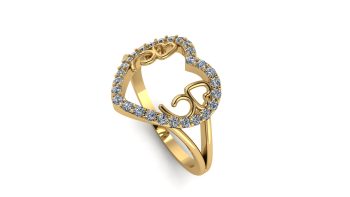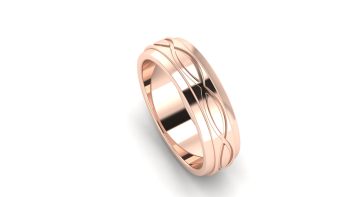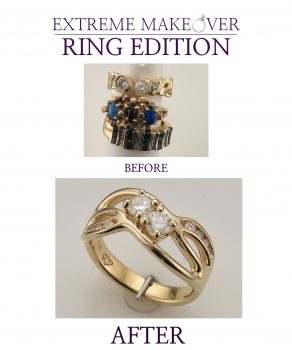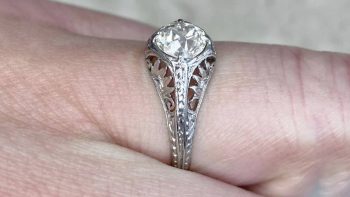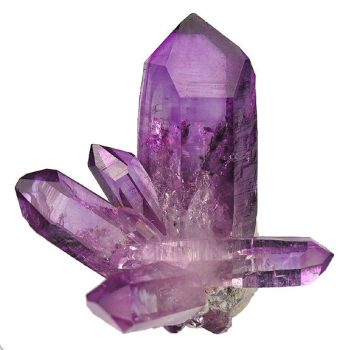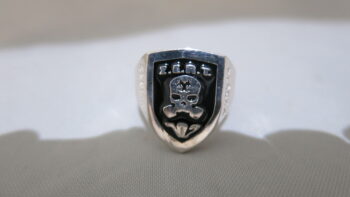We are going to talk about Jewelry Alloys now. One of the most often asked question we get from our custom jewelry customers is, “What metals are in my ring”? It is a good question because so many consumers have metal allergies. One of the most common metal allergies is to nickel. If you go to google and search for, “why is my ring turning my finger green?”. You will find countless postings and discussions on the topic. Most people’s first instinct is to blame the jeweler for selling them fake gold or platinum.
But the real culprit is an allergy to Jewelry Alloys. Most white gold rings and pendants are alloyed with nickel to turn them white. It is the nickel in the ring that is causing the finger to turn green. So, to help you decide if you need a special alloy, we will discuss what gold, silver, and platinum are and can be alloyed with to make sure this doesn’t happen to you.
Why Are Precious Metals Alloyed?
Gold, silver, and platinum are three of the most popular metals used in jewelry making. These metals are often alloyed with other metals to create a stronger and more durable piece of jewelry. But why is this necessary? Well, pure gold, silver, and platinum are actually quite soft and malleable, making them prone to scratches and dents. By alloying these metals with other metals, such as copper or nickel, the resulting alloy is much stronger and more resistant to wear and tear.
In addition to durability, alloying also allows for the creation of unique colors and finishes. For example, white gold is created by alloying gold with white metals such as nickel or palladium. Rose gold, on the other hand, is created by alloying gold with copper. By mixing different metals in varying amounts, jewelers can create a wide range of colors and finishes to suit any taste.
White Gold Jewelry Alloys
White gold is a popular choice for jewelry, but most don’t really understand how it is turned white. The most common alloy used to create white gold is a mixture of gold, nickel, and zinc. This combination creates a durable and scratch-resistant metal that has a bright white color.
However, some people may have an allergic reaction to nickel, which has led to the creation of alternative white gold alloys. One such alloy is made with palladium instead of nickel, which is hypoallergenic and has a similar color to traditional white gold. Another option is white gold made with silver or platinum, although these alloys can be more expensive. If you have a nickel allergy, these second two options will not turn your finger green.
In our opinion, the most important thing to consider when choosing a white gold alloy is your personal preference and any potential allergies. It’s always a good idea to consult with a jeweler to determine which alloy is best for you. Especially if you do or are worried you have a metal allergy. With so many options available, you’re sure to find the perfect white gold alloy for your jewelry needs.
Yellow Gold Jewelry Alloys
Yellow gold is a popular choice for jewelry and is always alloyed with other metals to increase its durability and strength. The most common yellow gold alloy is 14 karat gold, which is made up of 58.3% gold and 41.7% other metals such as silver, copper, and zinc. This alloy is known for its durability and affordability, making it a popular choice for engagement rings and wedding bands.
In addition to 14 karat gold, there are also less common alloys for yellow gold. 18 karat gold is another popular choice, containing 75% gold and 25% other metals. This alloy is known for its rich color and is often used in high-end jewelry pieces. 22 karat gold is also available, containing 91.7% gold and 8.3% other metals. This alloy is softer and more malleable than 14 and 18 karat gold, making it a popular choice for intricate jewelry designs. Luckily, allergies to the alloys used in yellow gold are uncommon, so you don’t really need to worry about it.
Overall, the choice of yellow gold alloy depends on personal preference and the intended use of the jewelry piece. While 14 karat gold is the most common and affordable option, 18 and 22 karat gold offer unique benefits such as richer color and greater malleability. There is also 10K, which only has 41.3% pure gold, making it even more durable than 14K. Ultimately, it is important to choose a reputable jeweler to ensure the quality and composition of your gold alloy when making a purchase.
Rose Gold Jewelry Alloys
Rose gold is a popular metal alloy that has been in use for centuries. The most common alloy for rose gold is made up of 75% gold and 25% copper. This combination gives the metal its signature pinkish hue that is beloved by many.
However, there are also less common alloys for rose gold that are worth exploring. For example, some alloys may include a higher percentage of gold, which results in a deeper, richer color. Others may include silver or zinc, which can create a more subtle shade of pink.
In our opinion, the beauty of rose gold lies in its versatility. Whether you prefer a bold, statement-making piece or a more understated look, there is a rose gold alloy out there that will suit your style.
Platinum Alloys
Platinum is a popular precious metal in the jewelry industry, known for its durability and lustrous shine. It is also hypo-allergenic, making it one of the more popular jewelry alloys. The most common platinum alloy is 95% platinum and 5% ruthenium, which is a great choice for making engagement rings and other pieces of jewelry that are worn daily.
However, there are also less common platinum alloys that are worth considering. One such alloy is 90% platinum and 10% iridium, which is a bit harder than the 95% platinum alloy and has a slightly different color. Another option is 90% platinum and 10% palladium, which is a bit softer than the 95% platinum alloy but has a similar color.
In our opinion, it’s important to consider all of the options when choosing a platinum alloy for your jewelry. While the 95% platinum alloy is the most popular, it’s worth exploring the less common alloys to find the one that best suits your needs. Ultimately, the choice comes down to personal preference and the specific qualities you’re looking for in your jewelry.
Palladium Jewelry Alloys
Palladium is a rare and precious metal that is not widely used in jewelry making anymore due to the cost. It costs about 50% more than platinum. It is also difficult to cast and not many will do it. The most common alloy for palladium is 95% palladium and 5% ruthenium. This alloy is popular because it is durable, tarnish-resistant, and hypoallergenic. It is also relatively affordable compared to other precious jewelry alloys like gold and platinum.
However, there are also less common alloys for palladium that are worth considering. One such alloy is 90% palladium and 10% iridium. This alloy is even more durable than the 95/5 alloy and has a higher melting point. Another less common alloy is 50% palladium, 40% silver, and 10% copper. This alloy has a unique color that is similar to white gold and is a good choice for those who want a more affordable alternative to platinum.
The most important factor to consider when choosing a palladium alloy is your personal preference and budget. While the 95/5 alloy is the most common and affordable option, the less common alloys offer unique benefits that may be worth the extra cost. Ultimately, it is up to you to decide which alloy is the best fit for your needs and style.
Silver Jewelry Alloys
Silver is a the most popular metal used in jewelry and other decorative items. The most common silver alloy is sterling silver, which is made up of 92.5% silver and 7.5% copper. This alloy is known for its durability and affordability, making it a popular choice for everyday jewelry.
However, there are also less common silver alloys that offer unique properties. Argentium silver, for example, is a modern alloy that contains germanium in addition to copper. This gives it a higher level of tarnish resistance and makes it easier to maintain than traditional sterling silver.
Another less common silver alloy is Britannia silver, which is made up of 95.8% silver and 4.2% copper. This alloy is known for its high level of purity and is often used in luxury items such as tea sets and candlesticks. It is not used for jewelry that often as it is softer then Sterling.
Overall, while sterling silver is the most common of the Jewelry Alloys, there are other options available for those looking for something different. Whether you prefer the durability of sterling silver or the unique properties of a less common alloy, there is a silver alloy out there for everyone.
Jewelry Stamps
Which brings us to gold stamps. We do not stamp our jewelry unless it is requested. There really is no need for it these days with the availability of cheap acid testers which will reveal a piece’s gold content. Plus, if we tell you we are making 14K white gold without nickel, the ring will be just that. Before the US market was flooded with cheap Asian jewelry, a stamp could usually be trusted. But unfortunately, not all manufacturers are honest. It is very easy to find gold rings stamped 14K that aren’t 14K. Same with 10K and 18K.
People became so trusting of stamps that many asian manufacturers began to use less gold than they were supposed to because nobody ever checked. So, just because your ring is stamped 14K doesn’t make it so. Anyone can stamp a piece of jewelry with any stamp they want, so don’t place stock in them. We tell people we can stamp a piece of cheese 18K, but that doesn’t make it so.
The Bottom Line
Most of you will never need to worry about this. However, for those that do, this is a good resource. You don’t want to have a custom ring made to put it on and have it turn your finger green! You can view our portfolio of custom engagement rings or custom pendants to look for ideas. Or you can contact us with your own idea. And HERE is another, more intensive guide to what we have discussed.
